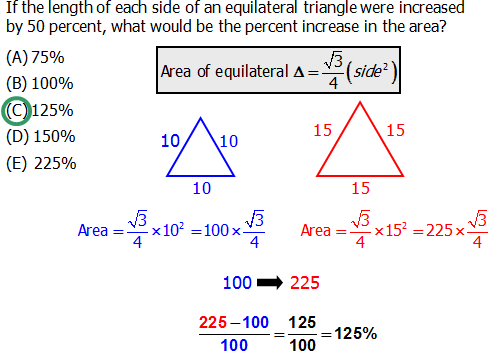
Suppose you have an equilateral triangle with sides of length
Step #1: We know that the formula for the area of a triangle is
Step #2: We draw an altitude, that is, a line from

Step #3: Point
Step #4: Call the length of
Step #5: Now that we have the height in terms of
That last formula is, indeed, the area of an equilateral triangle, and remembering it will be a definite time-saver on Math. Again, I don’t want you to memorize it. Rather, I strongly encourage you to remember this five step argument: practice recreating it step-by-step until you can flawlessly recapitulate the entire thing by yourself. Then, you won’t merely remember this formula — you will own it!
I encourage you to do that with each important math formula. If you don’t know the steps that lead to a particular formula, and can find it online, leave me a comment :).
Q1. If the length of each side of an equilateral triangle were increased by 50 percent, what would be the percent increase in the area?
A. 75% B. 100% C. 125% D. 150% E. 225%
Answer = C